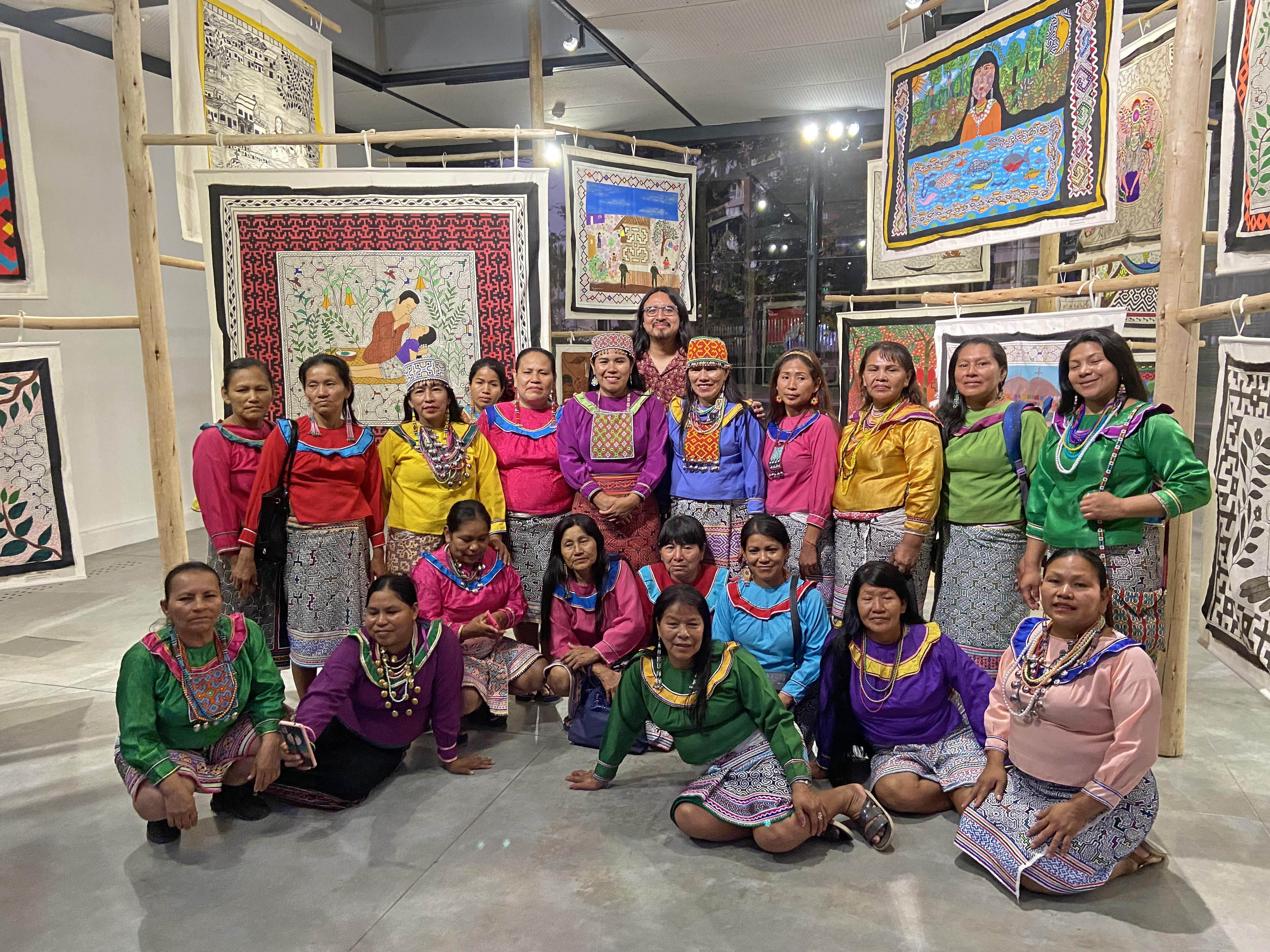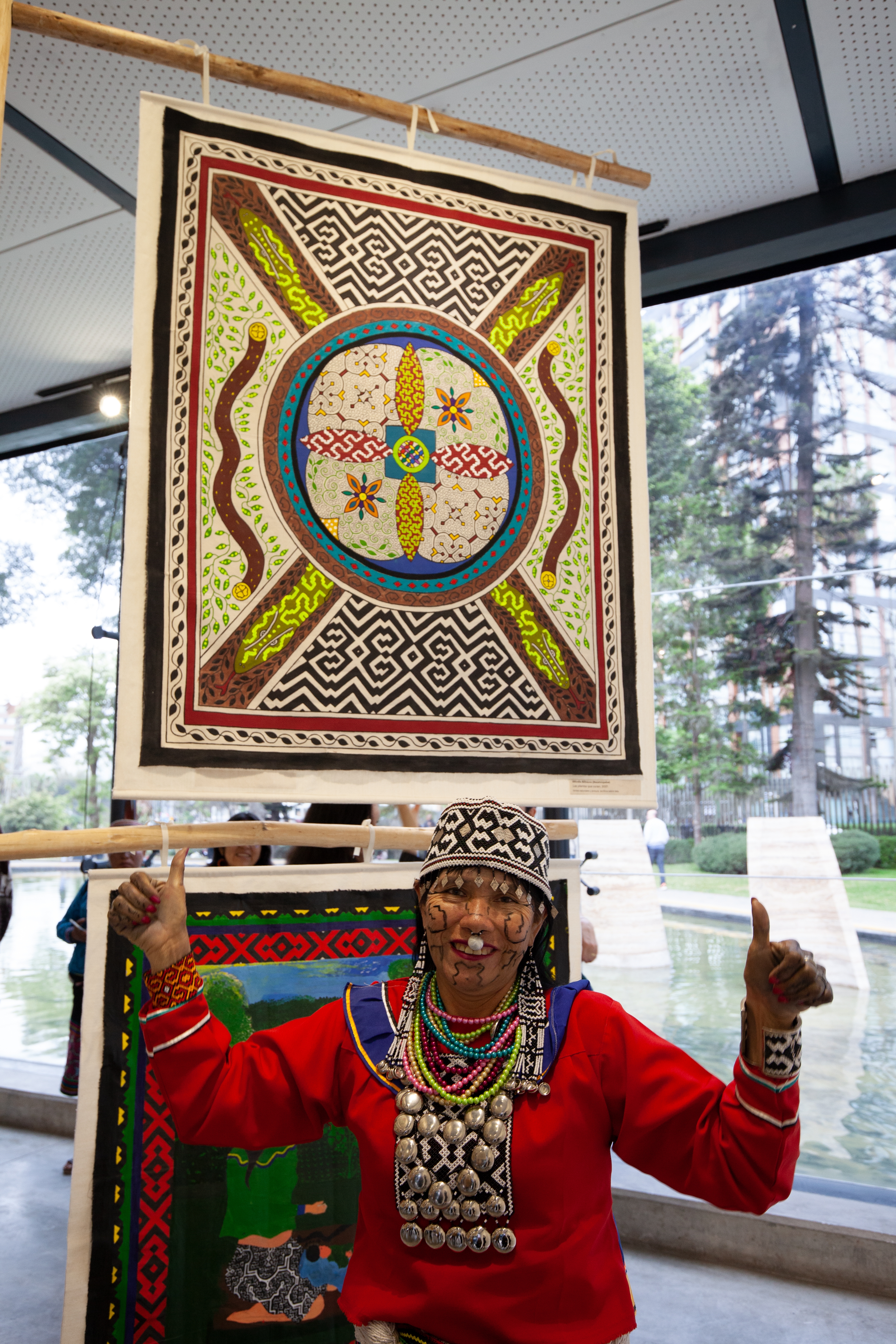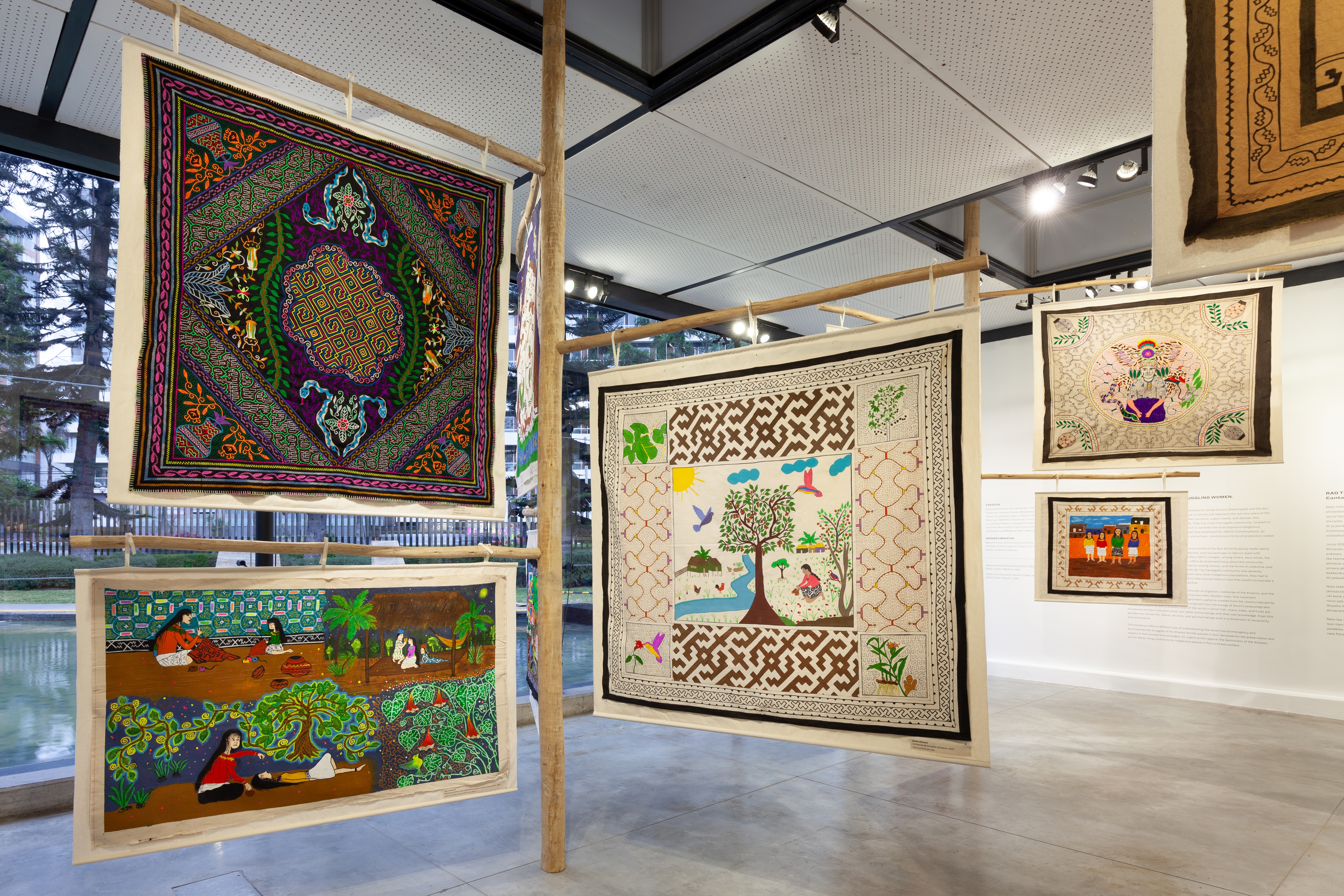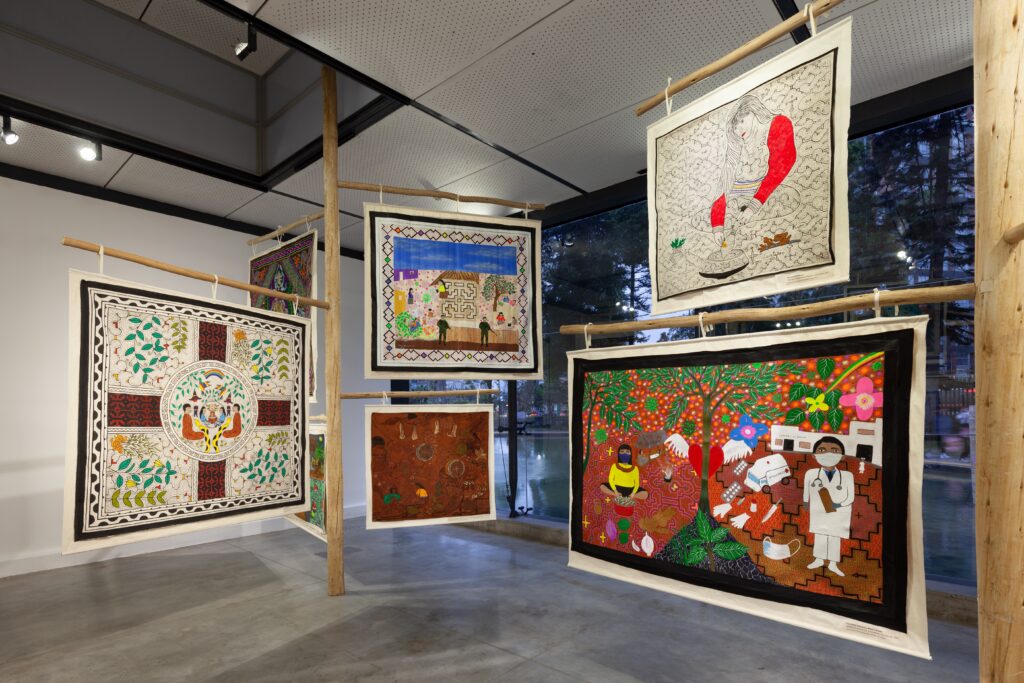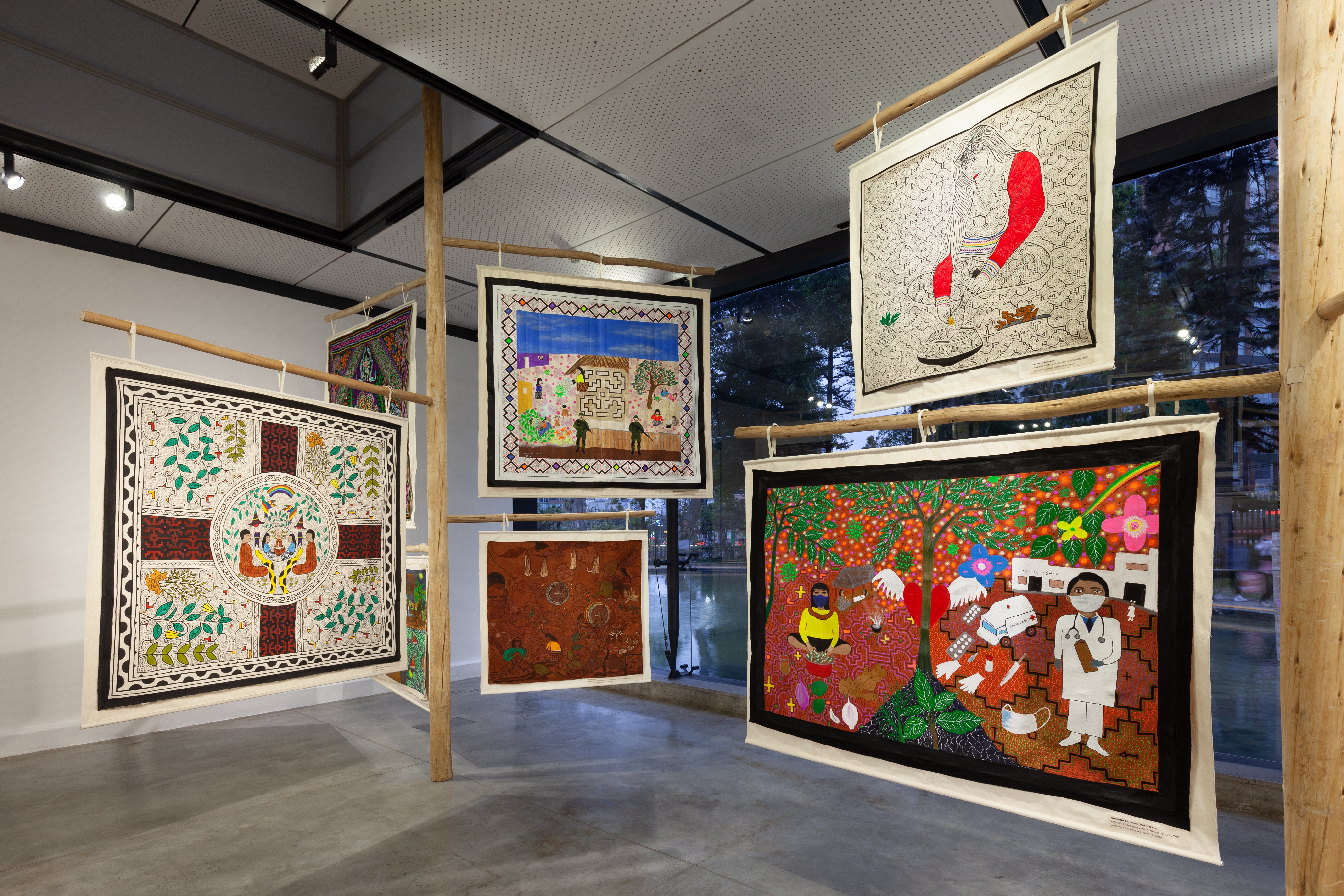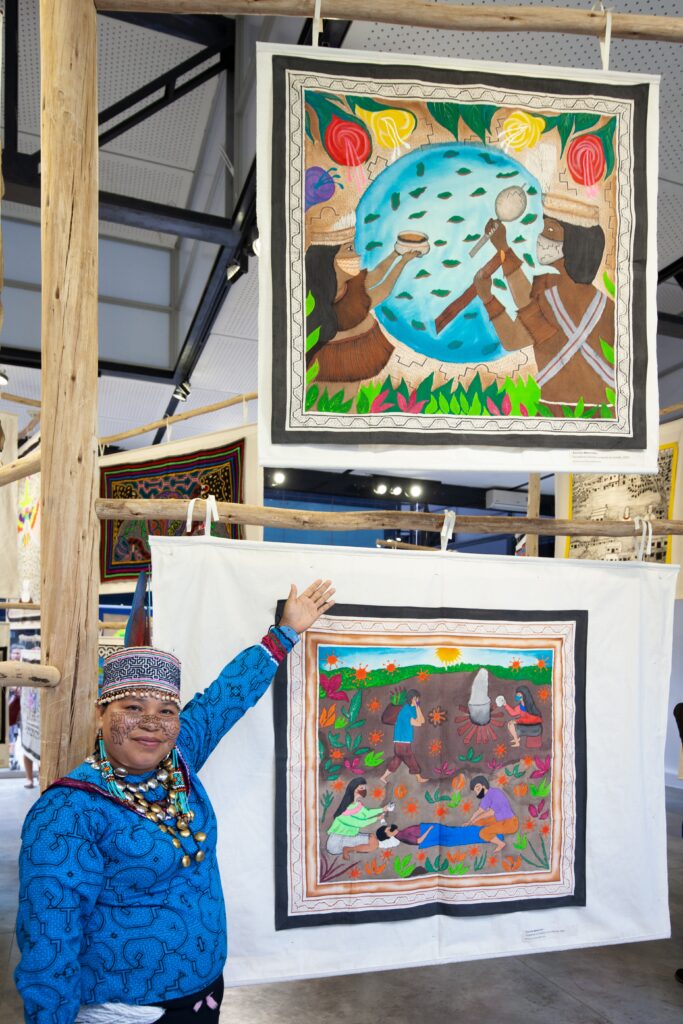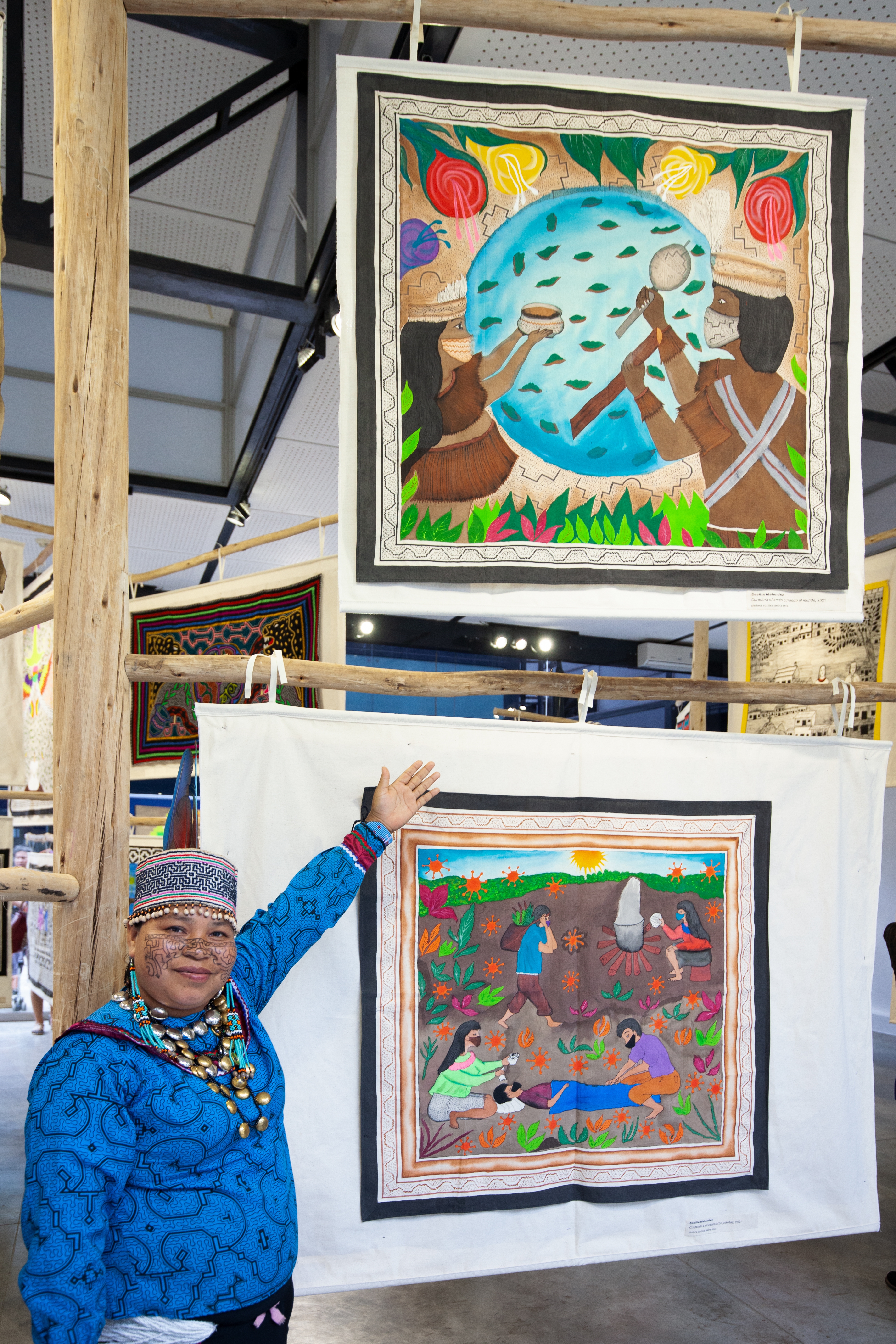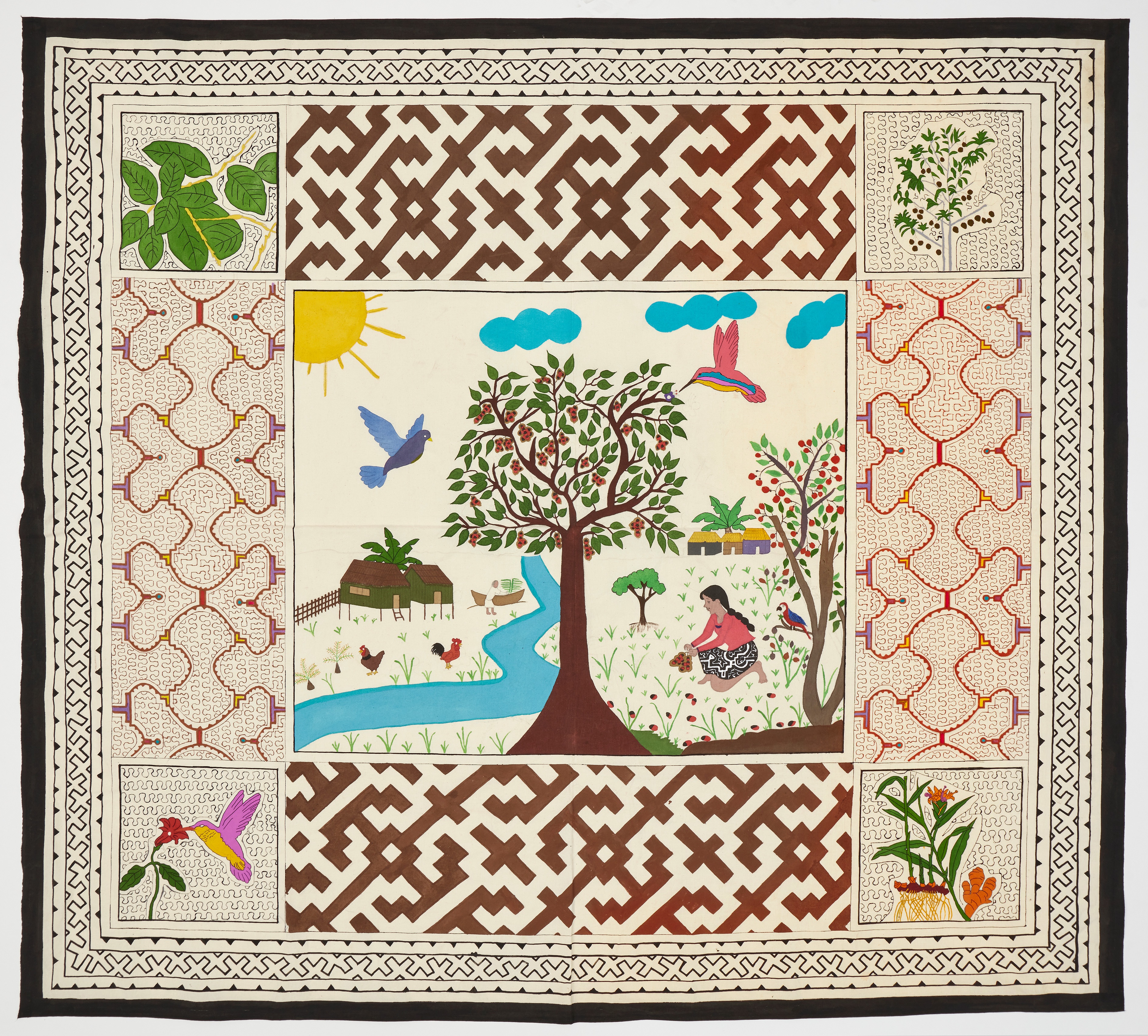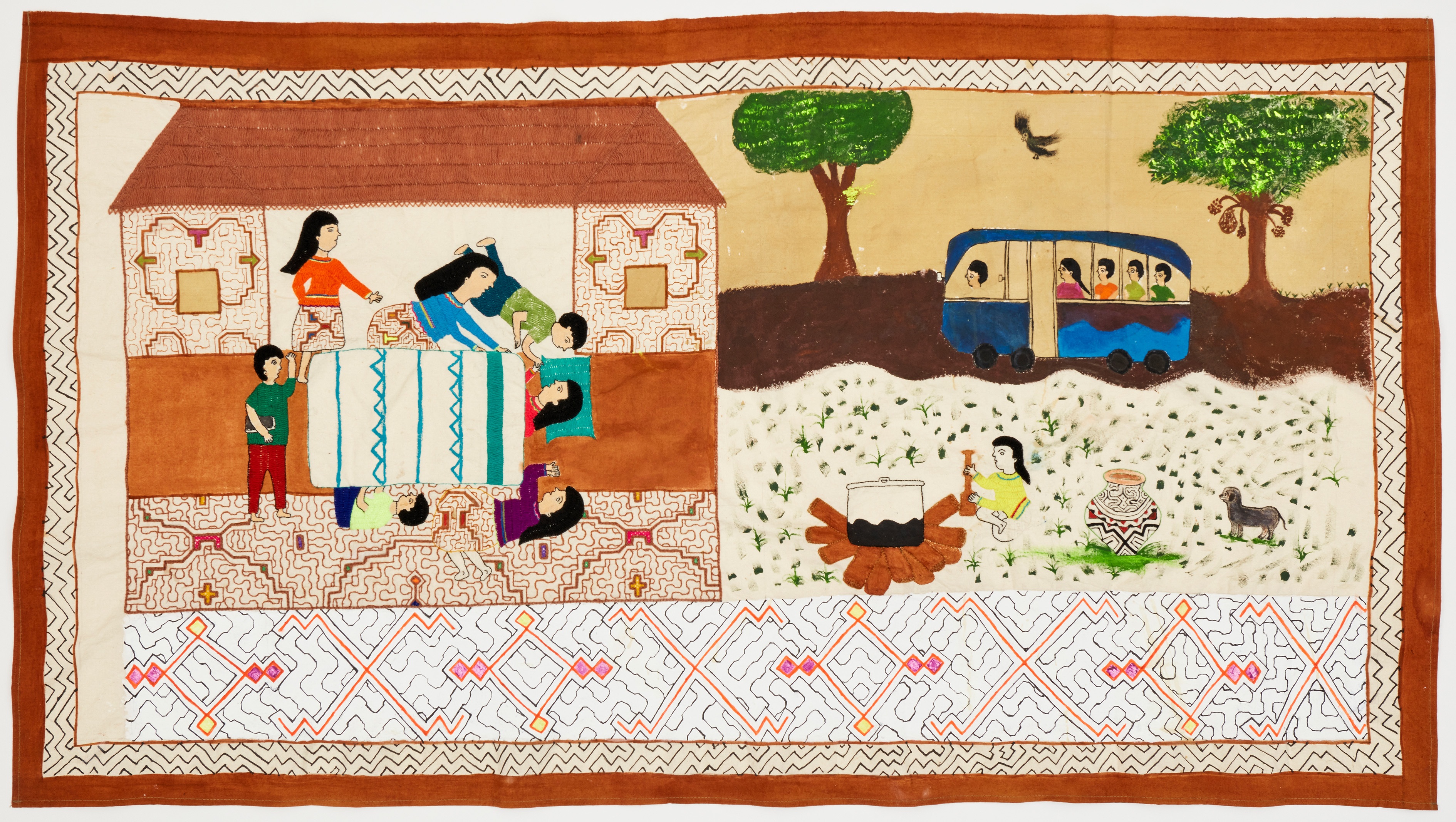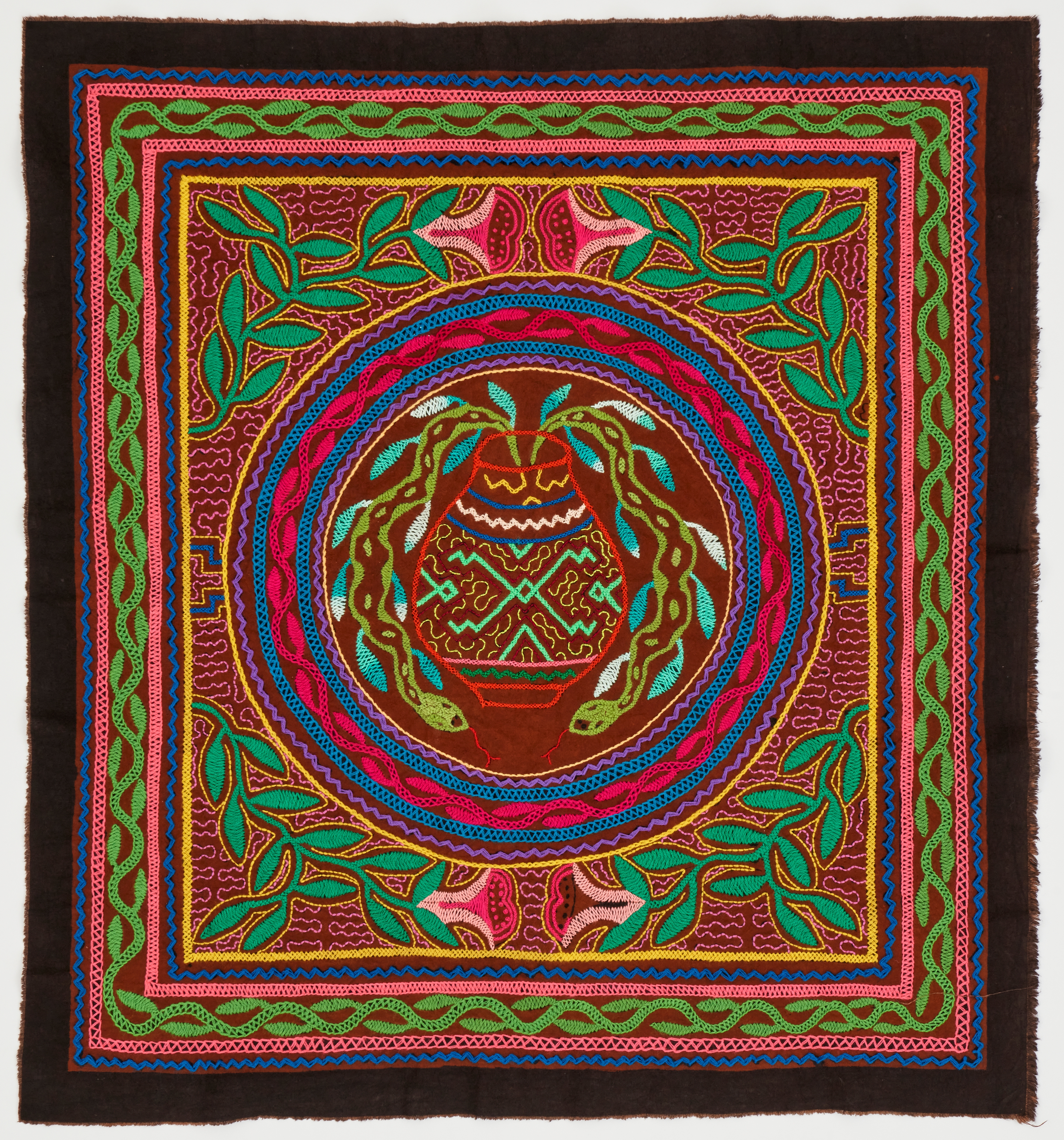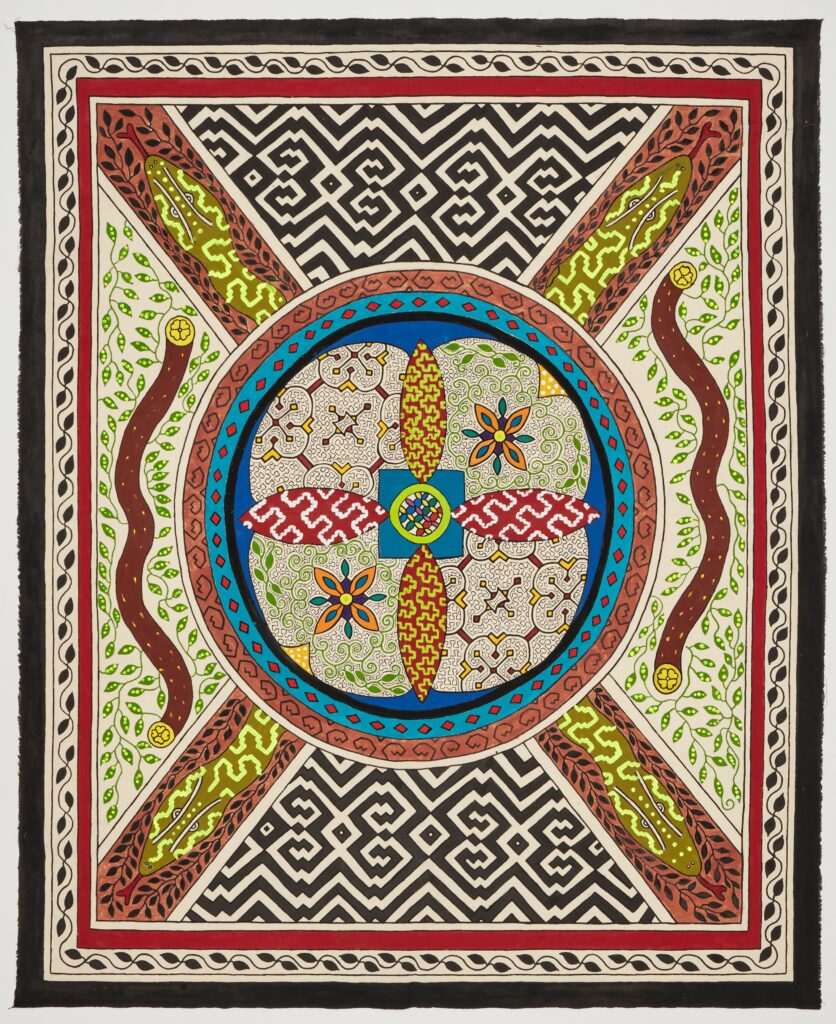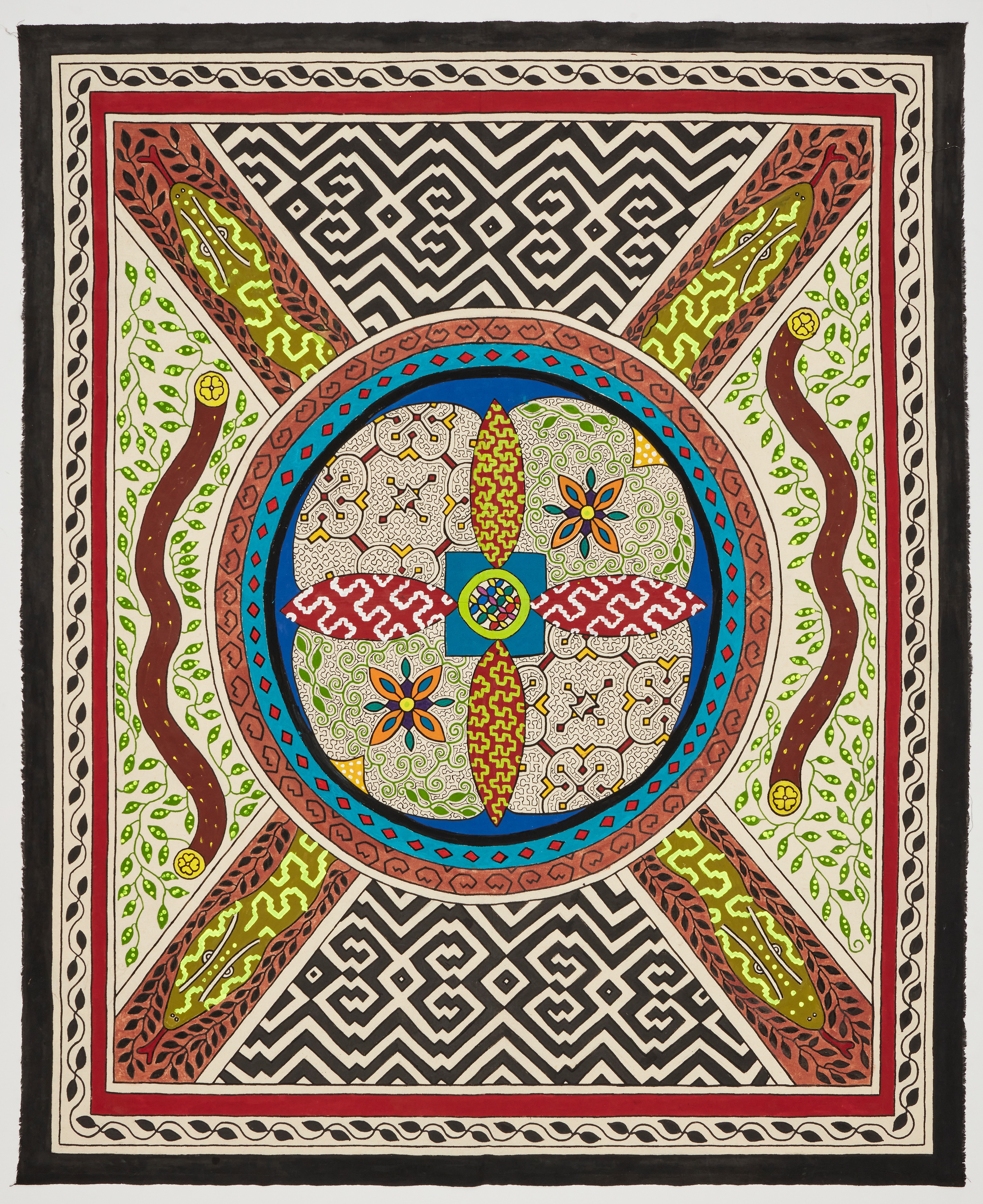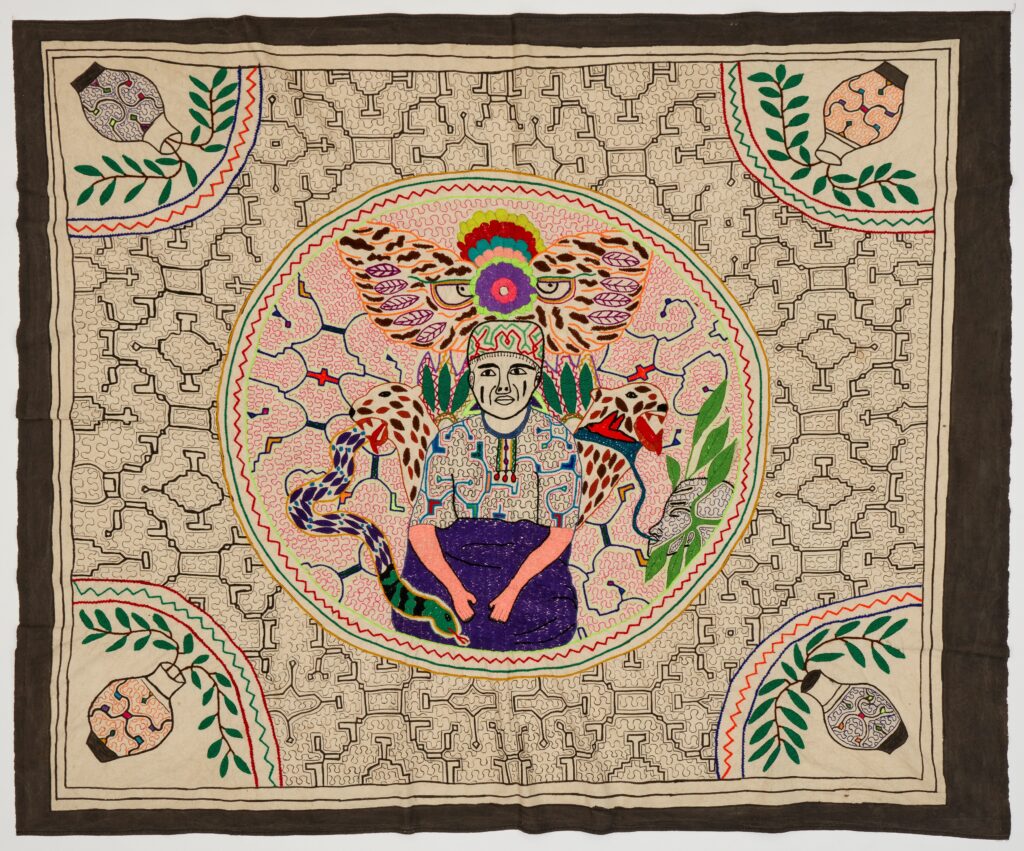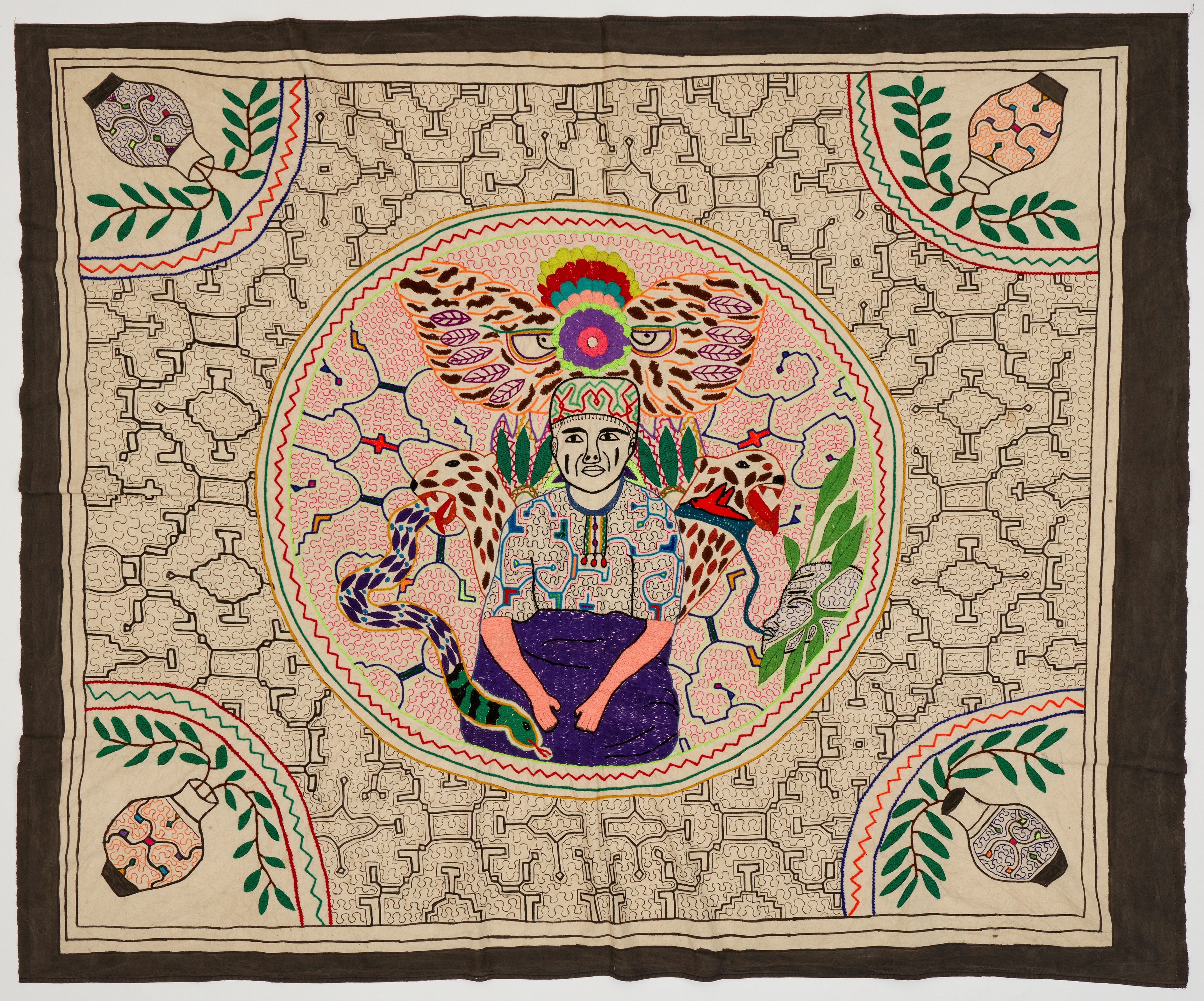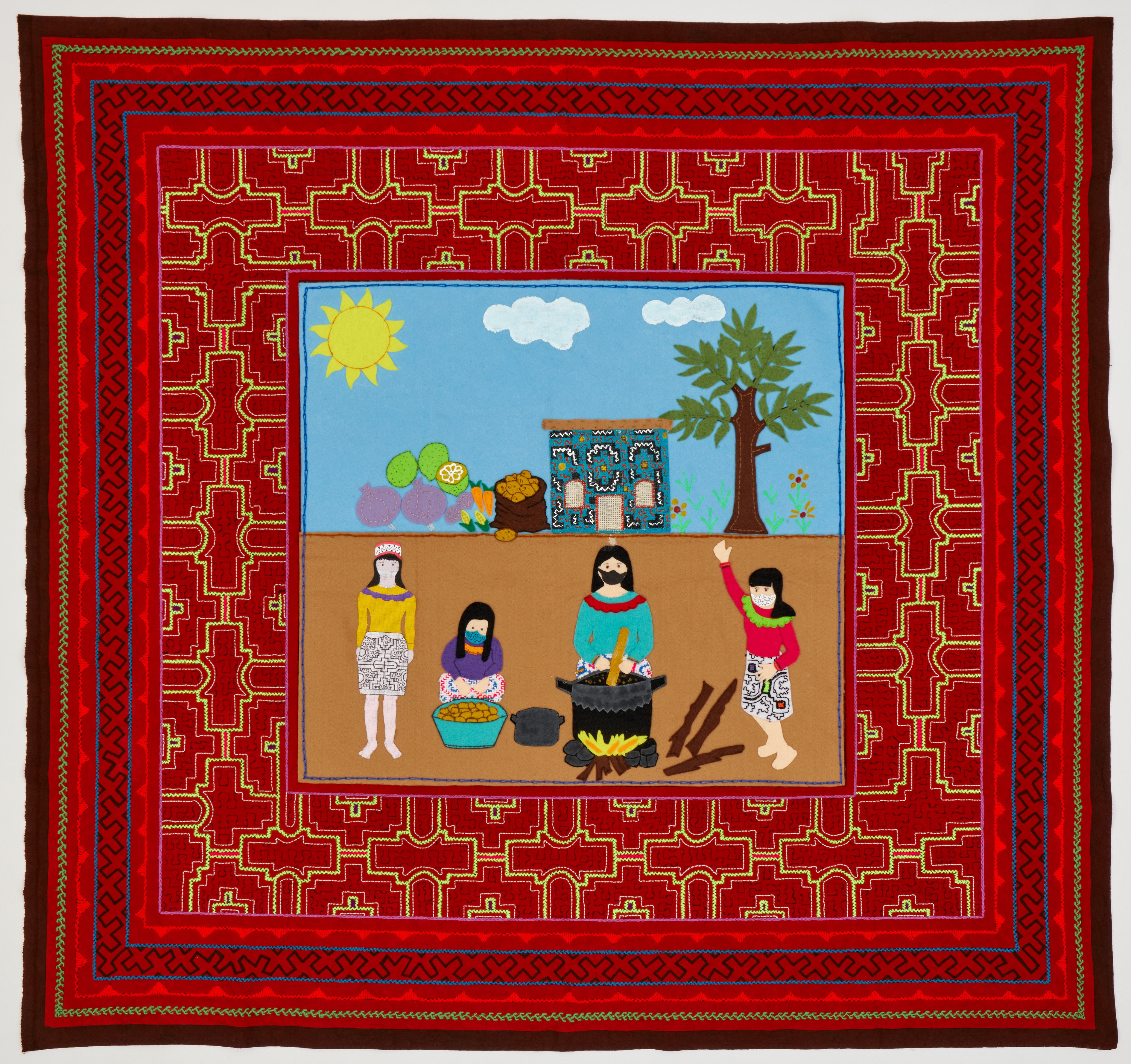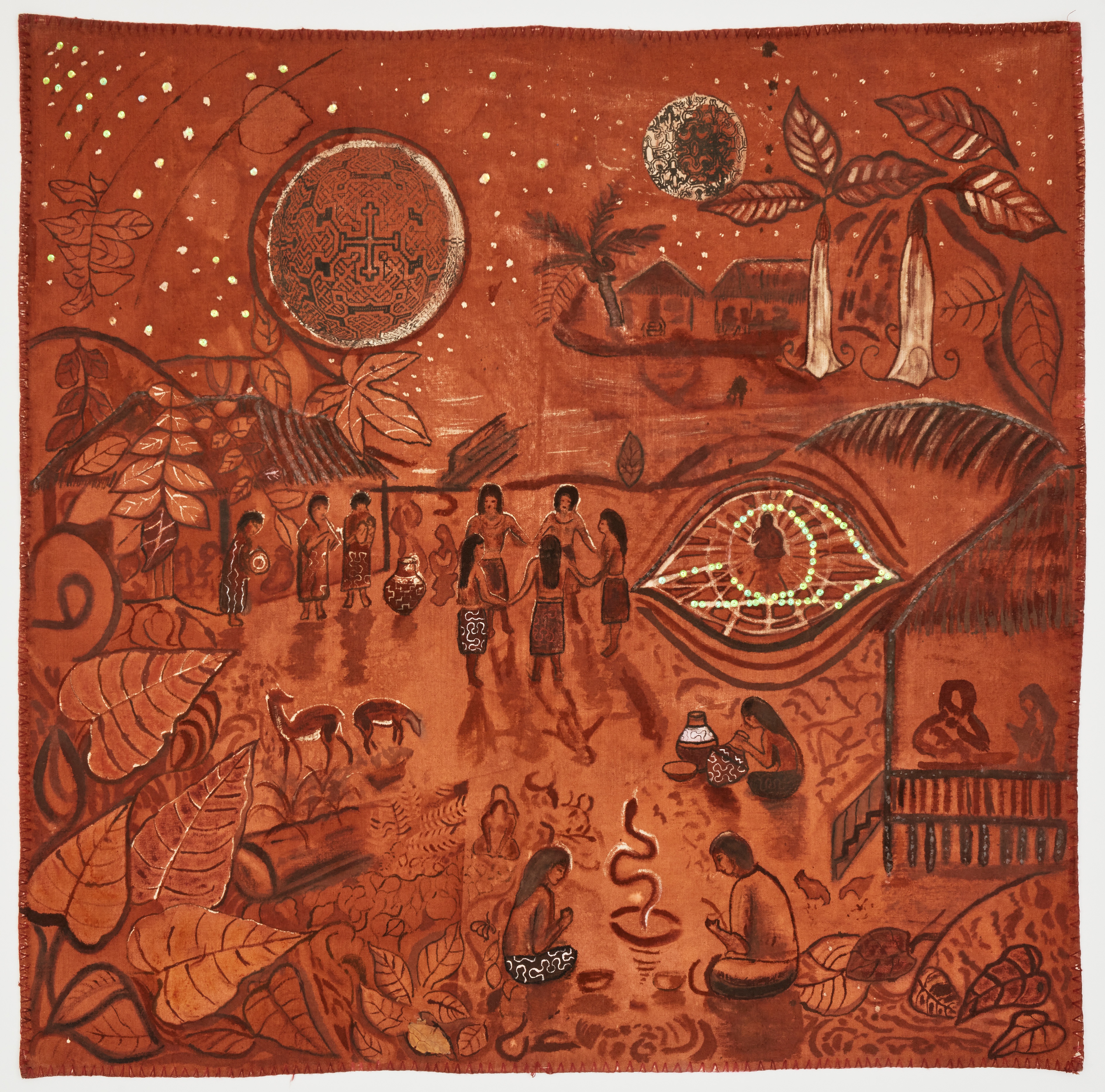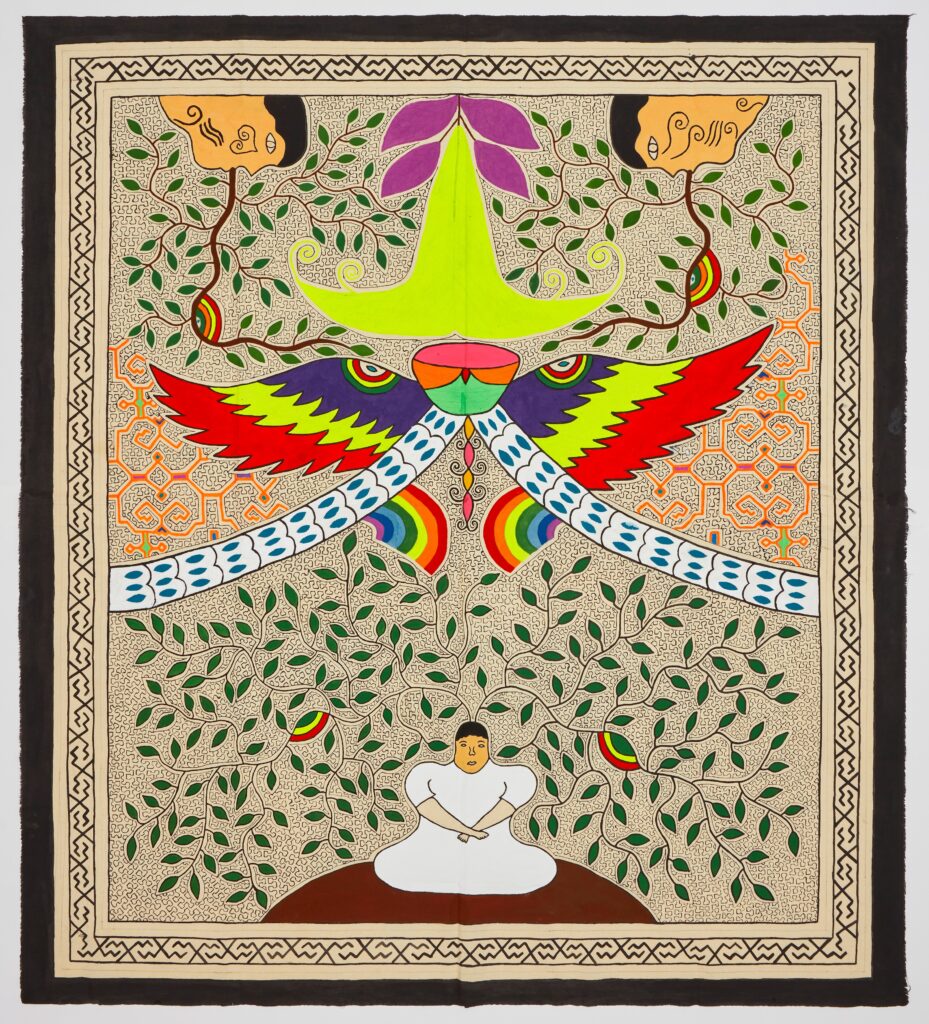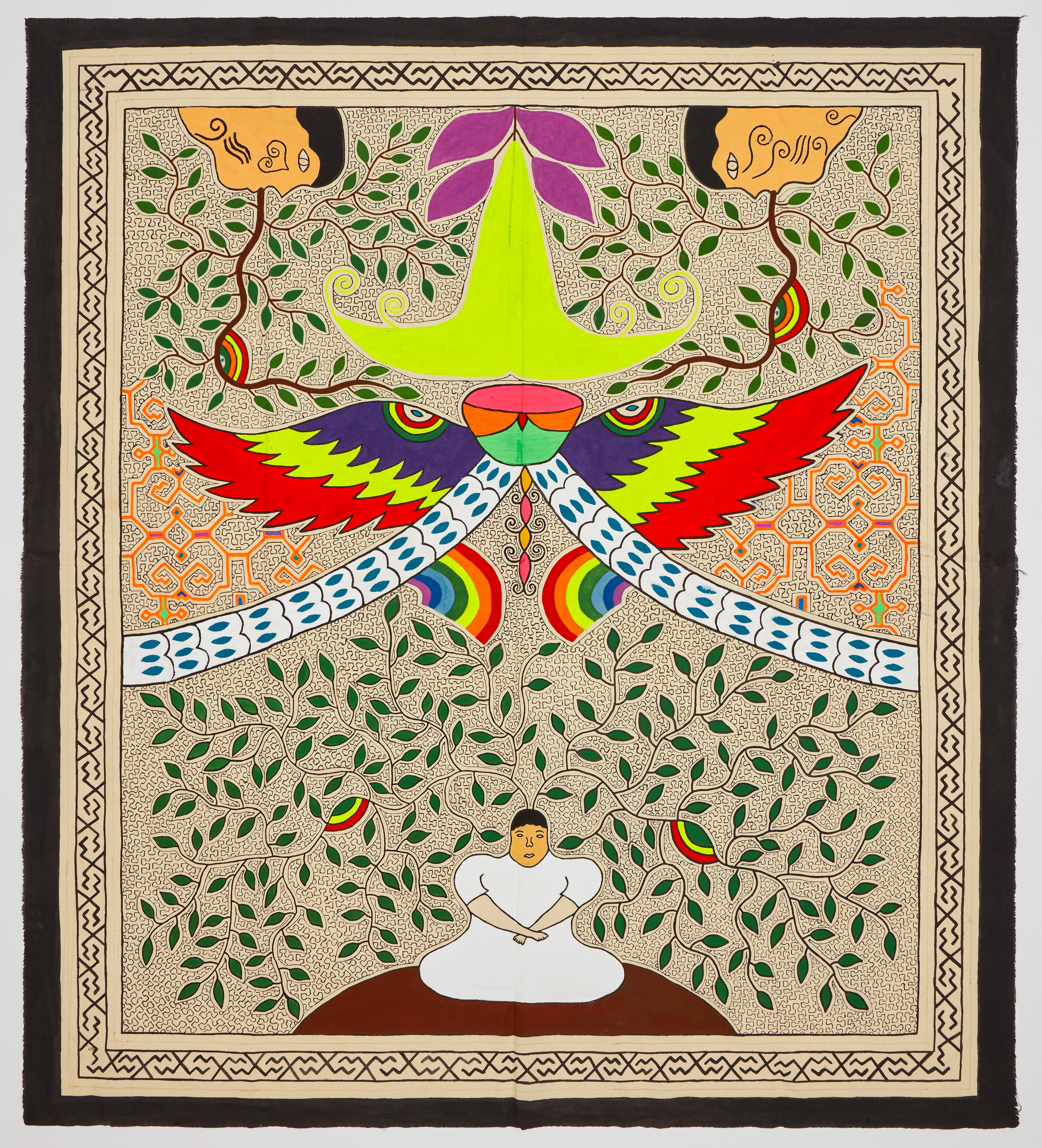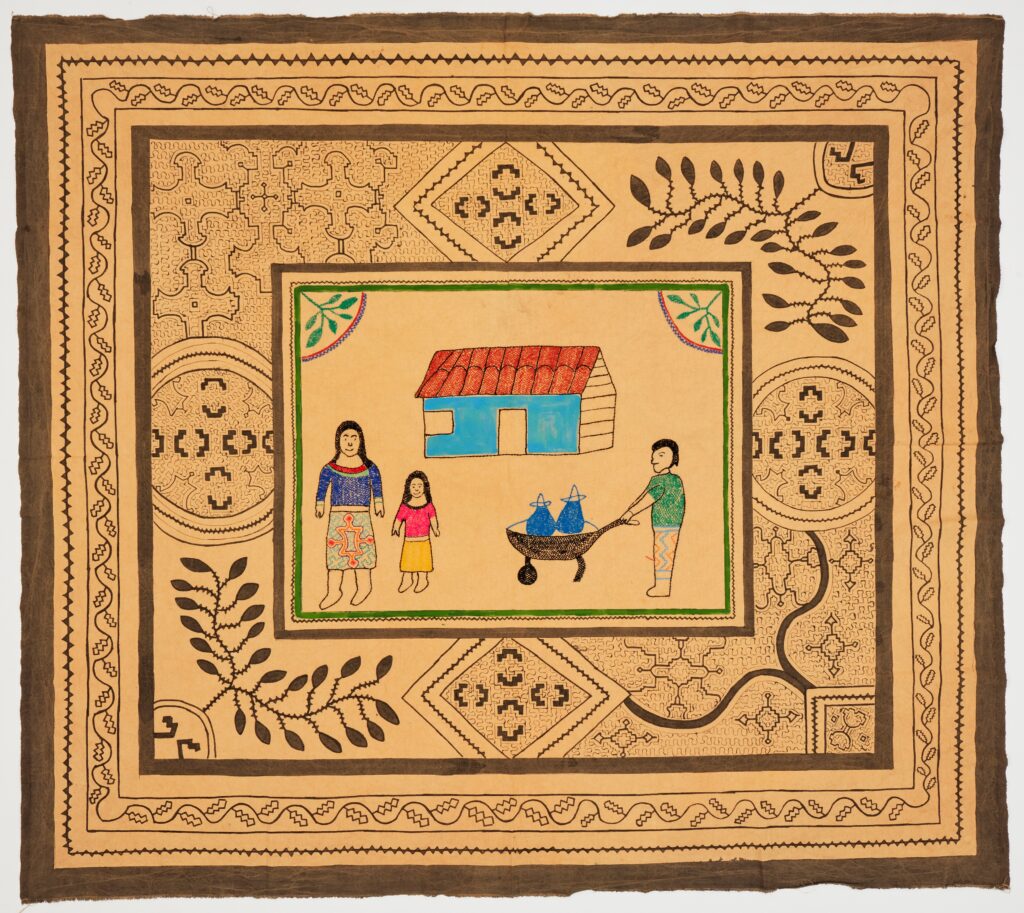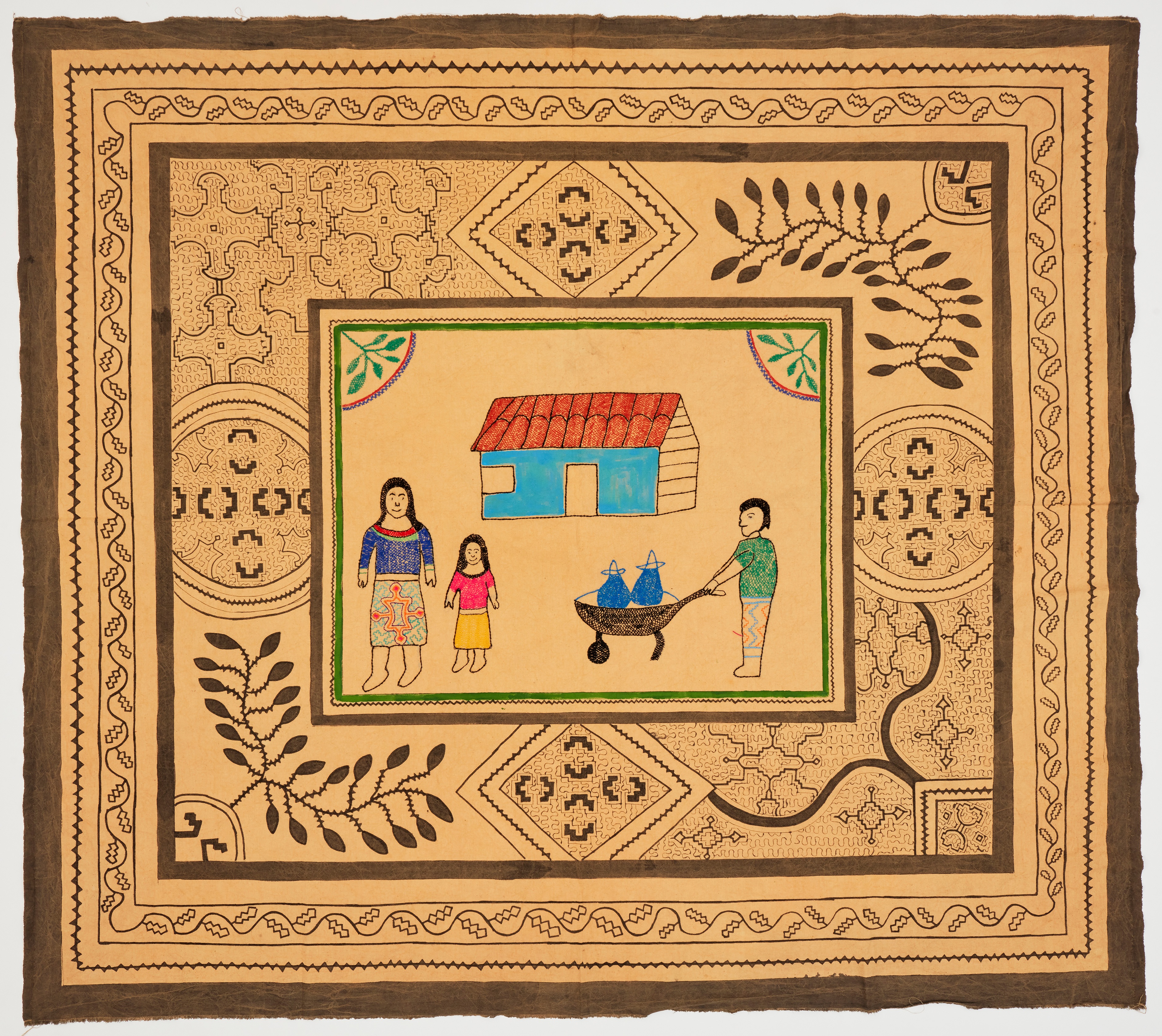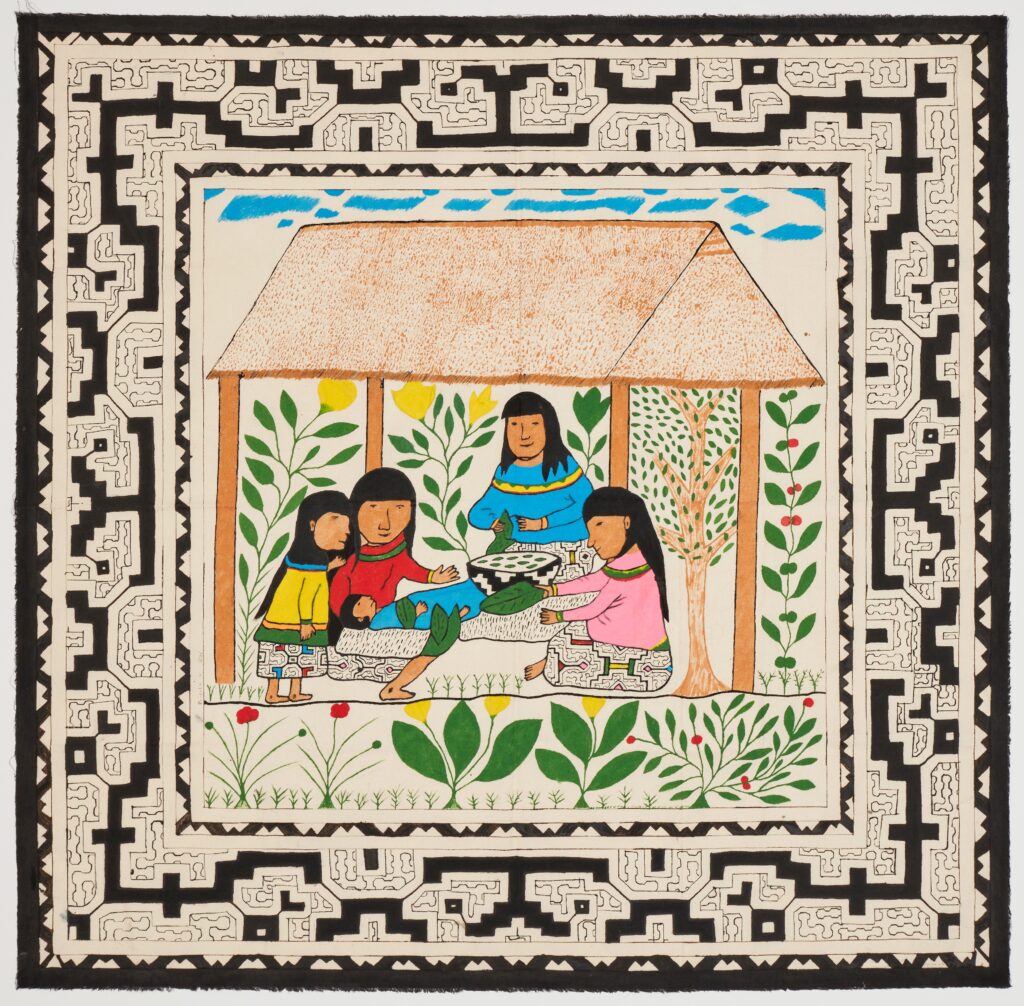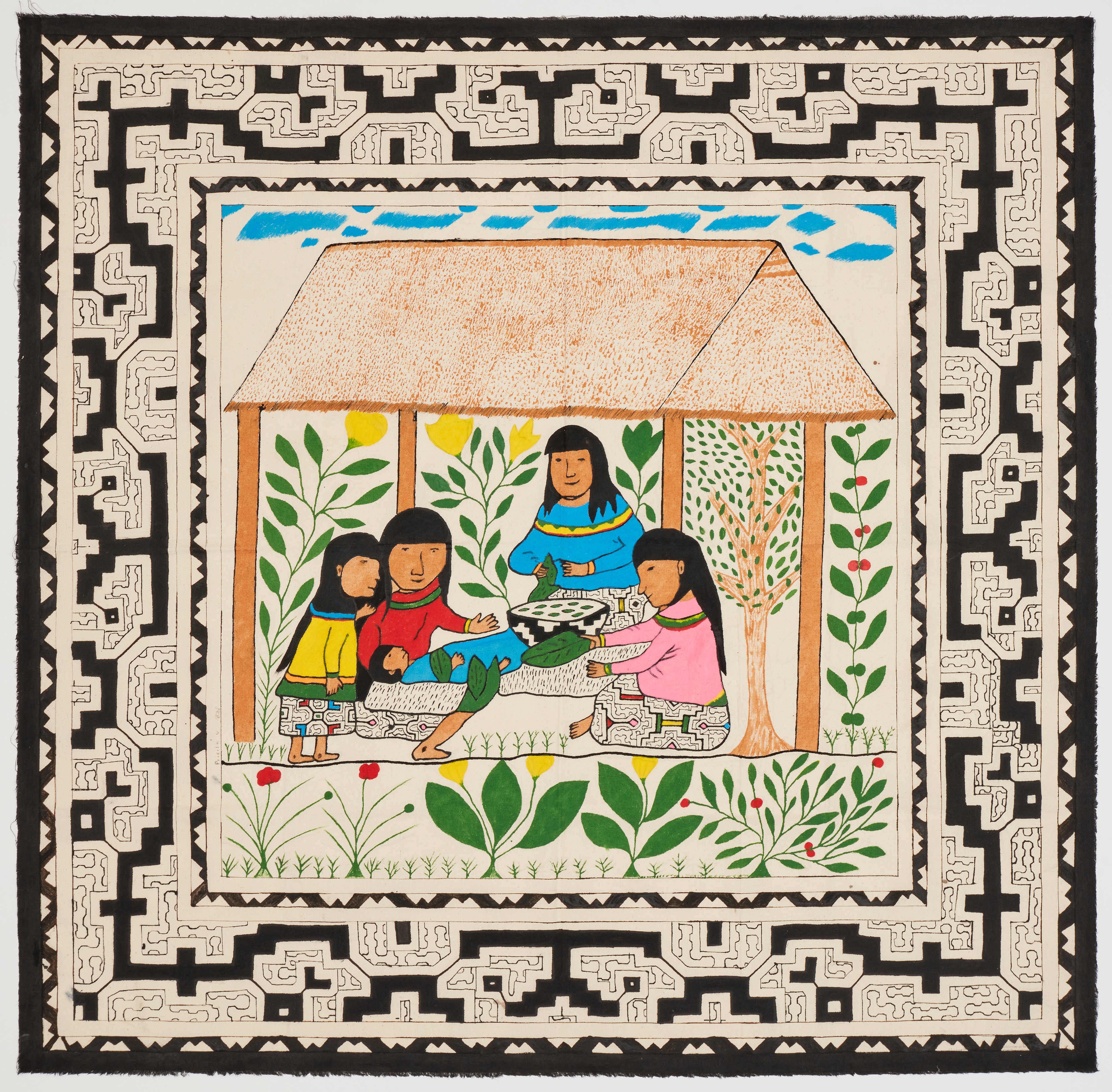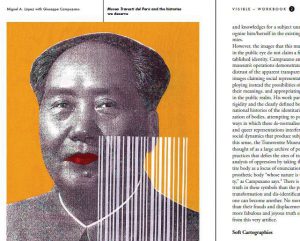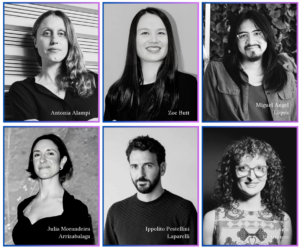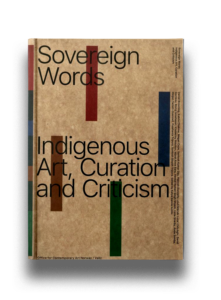About the project
Period
from 2021
Location
Lima and Pucallpa, Peru
External links
Proposed by
Miguel A. López
Shinan Imabo (Our Inspirations) is a collective of over 35 Shipibo-Konibo artisan women—embroiderers, painters, singers, and designers—founded in early 2021. The Shipibo-Konibo are an Indigenous group from the Amazon region of Peru, residing along the Ucayali River, which flows from the Andes and merges with the Amazon River in the north. The community has long maintained exchanges with neighbouring Indigenous groups such as the Machiguenga, Asháninka, and Yine, and they also have a significant presence in urban centres like Pucallpa and Lima, where they produce and trade their artistic creations.
The collective is based in Cantagallo, the largest Indigenous urban settlement in Peru. Cantagallo emerged in the late 1990s from the migration of hundreds of Shipibo people from the rainforest to Lima. Established on a former landfill and often described as a pueblo joven (shantytown), Cantagallo has, over the past two decades, developed into a vibrant centre for Indigenous cultural expression. It allows Shipibo people to navigate Western urban life while maintaining deep connections to their roots.
Shinan Imabo is led by artist and activist Olinda Silvano, known in Shipibo as Reshinjabe, meaning “the first breath.” She is also the president of ACUSHIKOLM, the Shipibo-Konibo Urban Community Association of Lima, which represents over 200 Indigenous families living in Cantagallo and promotes the aesthetic, scientific, and medicinal knowledge of the Shipibo-Konibo people. The collective has been involved in exhibitions, public murals, and cultural fairs aimed at generating income and visibility for the community.
A central theme of their work is Kené, a visual language that embodies the Shipibo-Konibo worldview. In their language, there is no direct translation for “art”; instead, they speak of Kené, or “design.” These intricate geometric patterns—created traditionally by women—are found on ceramics, textiles, paintings, objects, and human skin. Kené is both aesthetic and spiritual, often emerging from visions induced by sacred plants such as ayahuasca or piri-piri, and it is said to be contained in the skin of the anaconda (Ronin), which holds the designs of all beings—plants, animals, spirits, and humans—across time.
In this cosmology, humans do not dominate nature; rather, nature is made up of active beings with thoughts and knowledge. As scholar Guillermo Enrique Delgado notes, “it is not simply that plants ‘have curative powers.’ It is about something deeper: plants, or more precisely their owners—the spirits—have thoughts that are communicated to the blood of humans.”
Shinan Imabo’s work addresses environmental destruction not as a side effect of Western progress but as central to its logic. Their practice explores stories of migration and life in urban Lima, colonial violence and dispossession, the absence of intercultural healing policies, the sacredness of plants, and the power of communal care among women.
About the artist
Shinan Imabo (Our Inspirations) is a collective of over 35 Shipibo-Konibo women artisans, including embroiderers, painters, singers, and designers, based in Lima and Pucallpa, Peru. The collective emerged in 2021 to preserve and share Shipibo-Konibo artistic traditions, particularly the intricate geometric designs known as Kené. The Shipibo-Konibo, an Indigenous people from the Amazon region, have historically lived along the Ucayali River, maintaining cultural exchanges with neighboring groups and developing a profound knowledge of the relationships between human life, the Amazon forest, and spirituality.
Contents
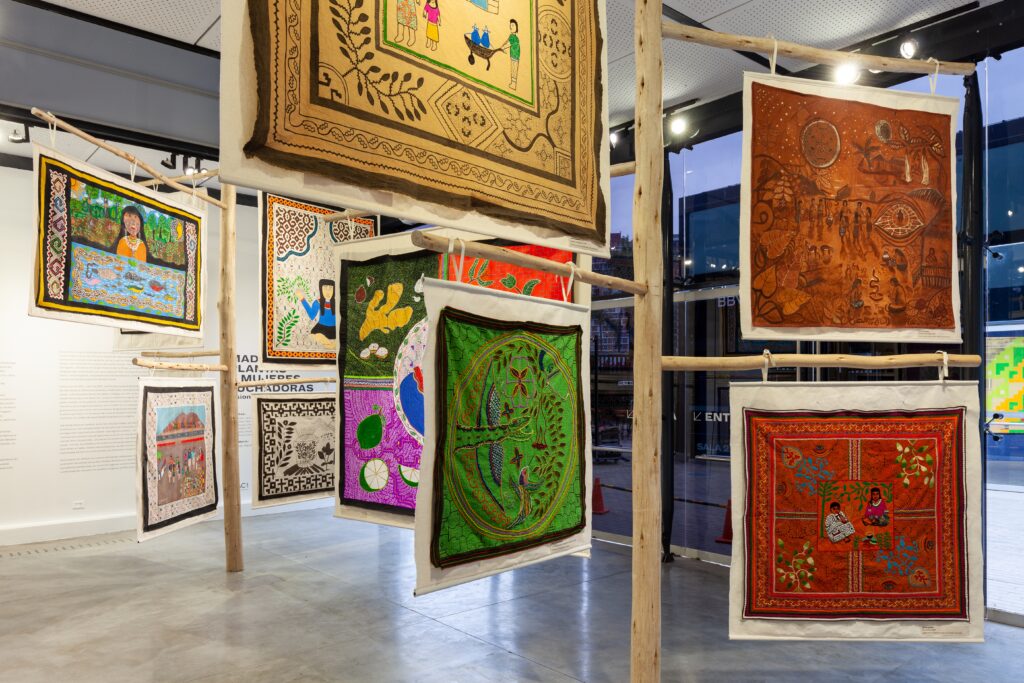 arrow_upward
arrow_upward
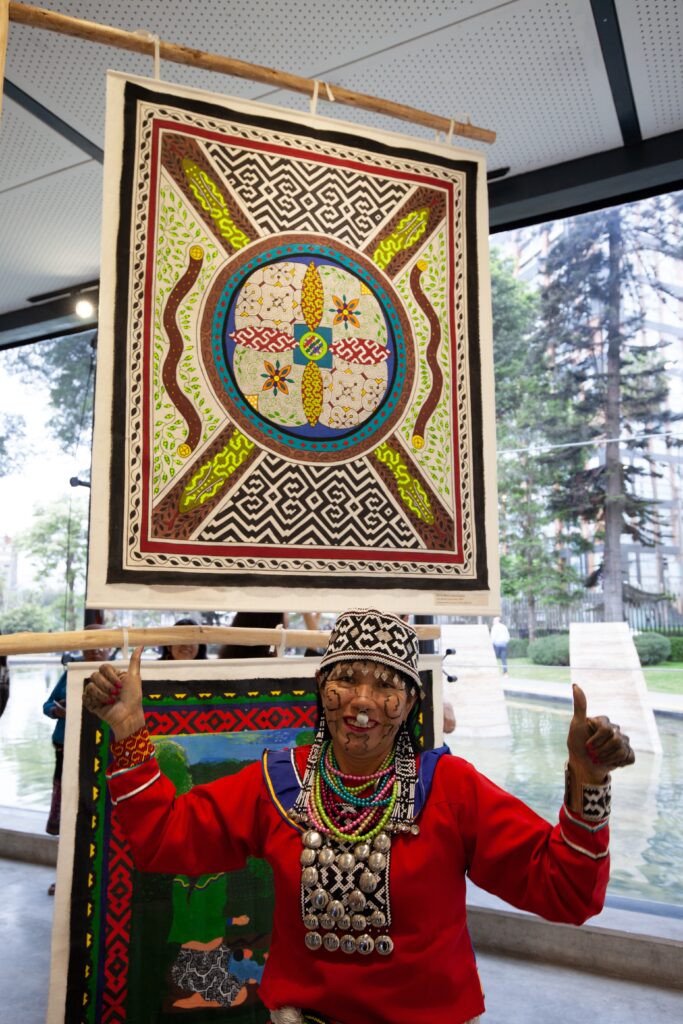 arrow_upward
arrow_upward
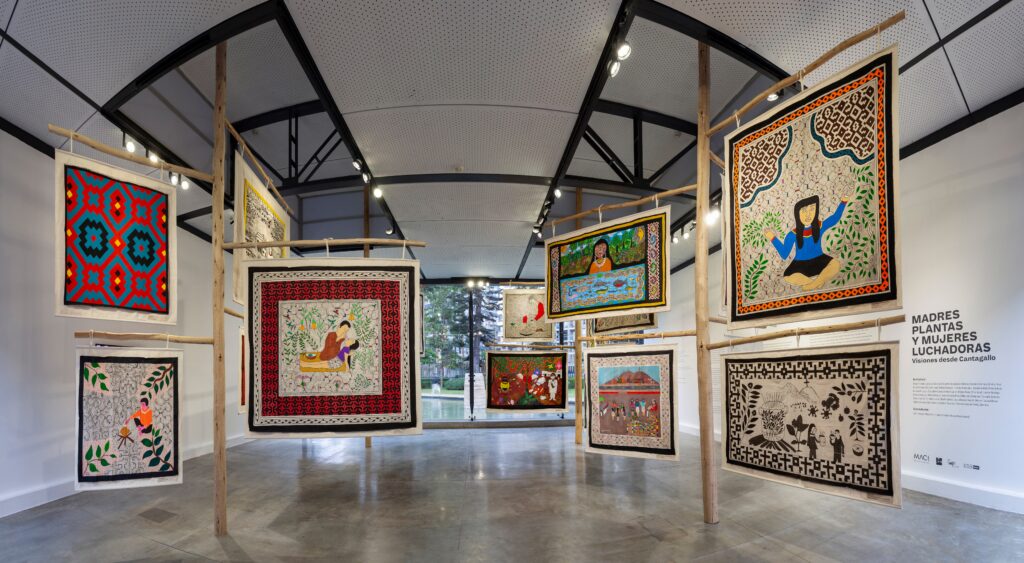 arrow_upward
arrow_upward
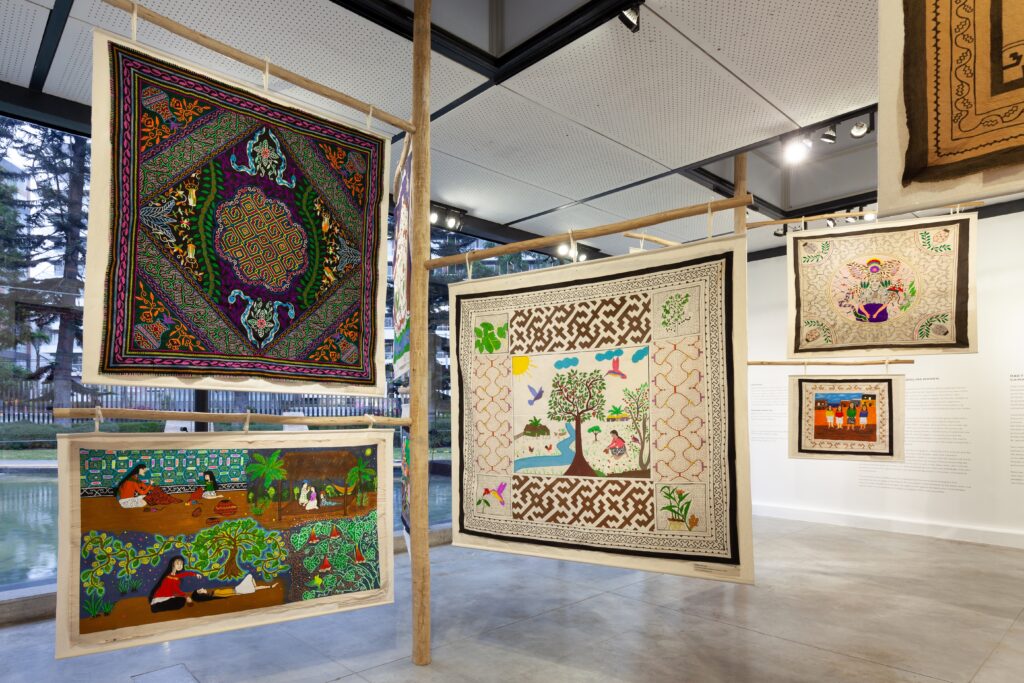 arrow_upward
arrow_upward
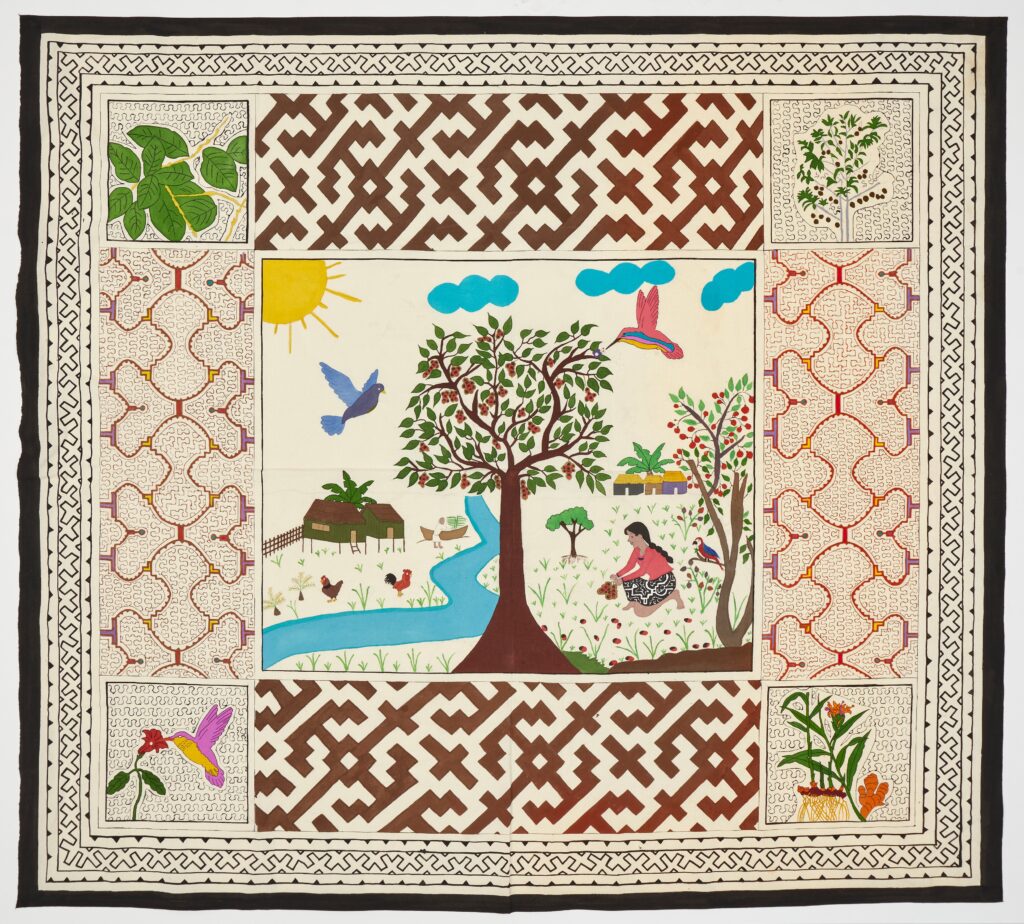 arrow_upward
arrow_upward
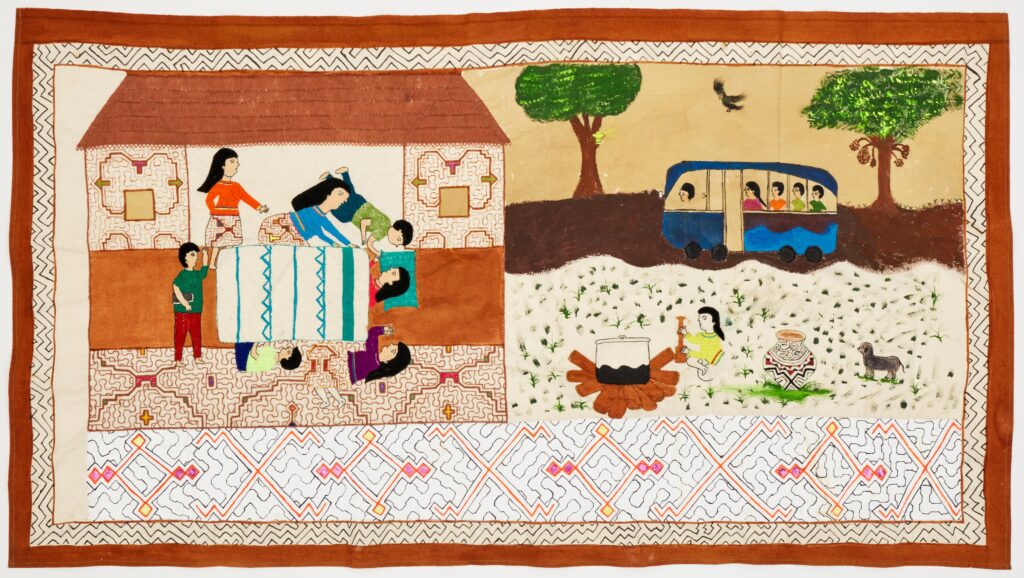 arrow_upward
arrow_upward
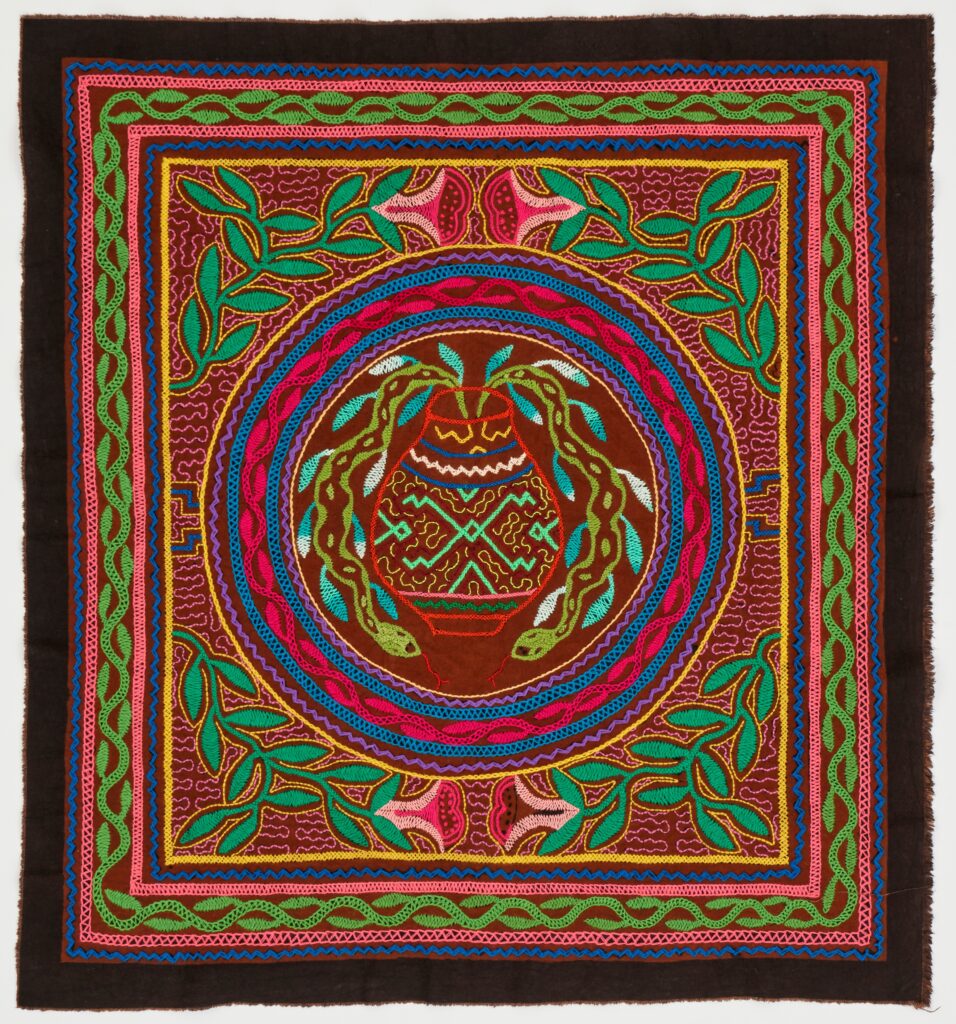 arrow_upward
arrow_upward
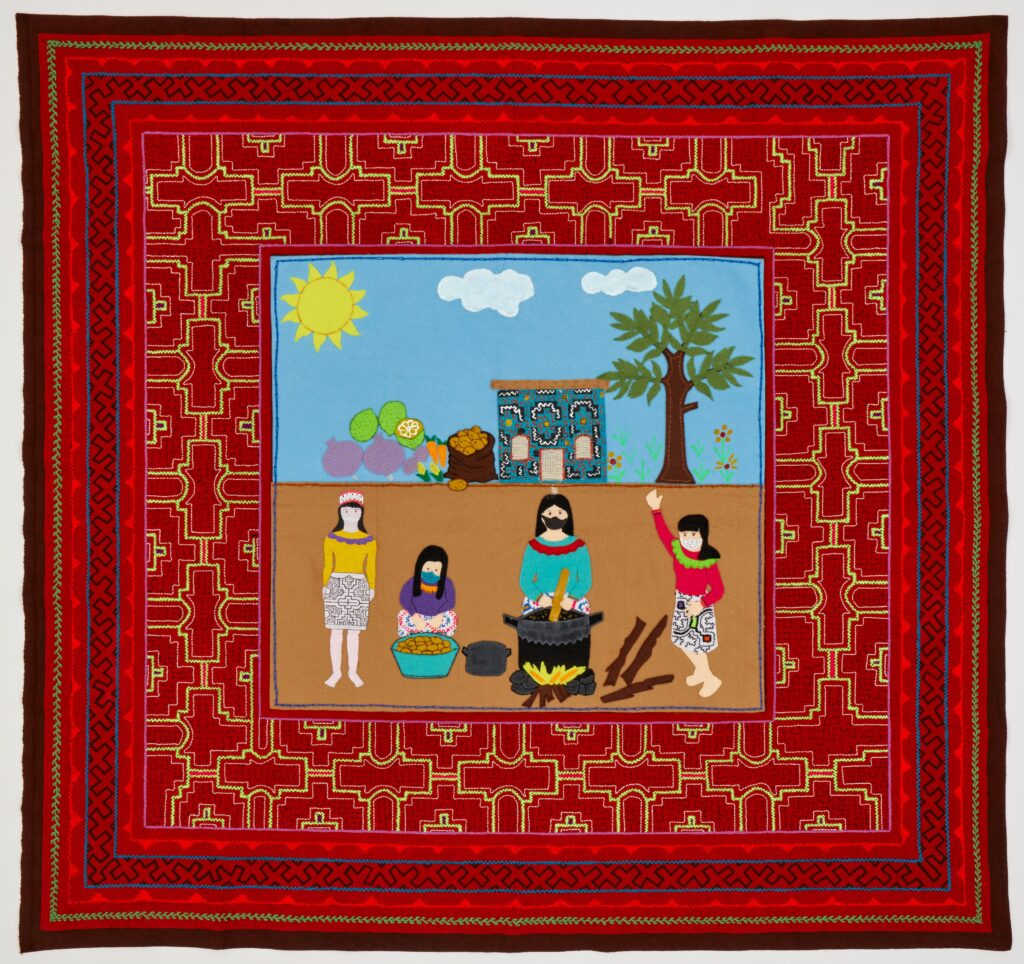 arrow_upward
arrow_upward
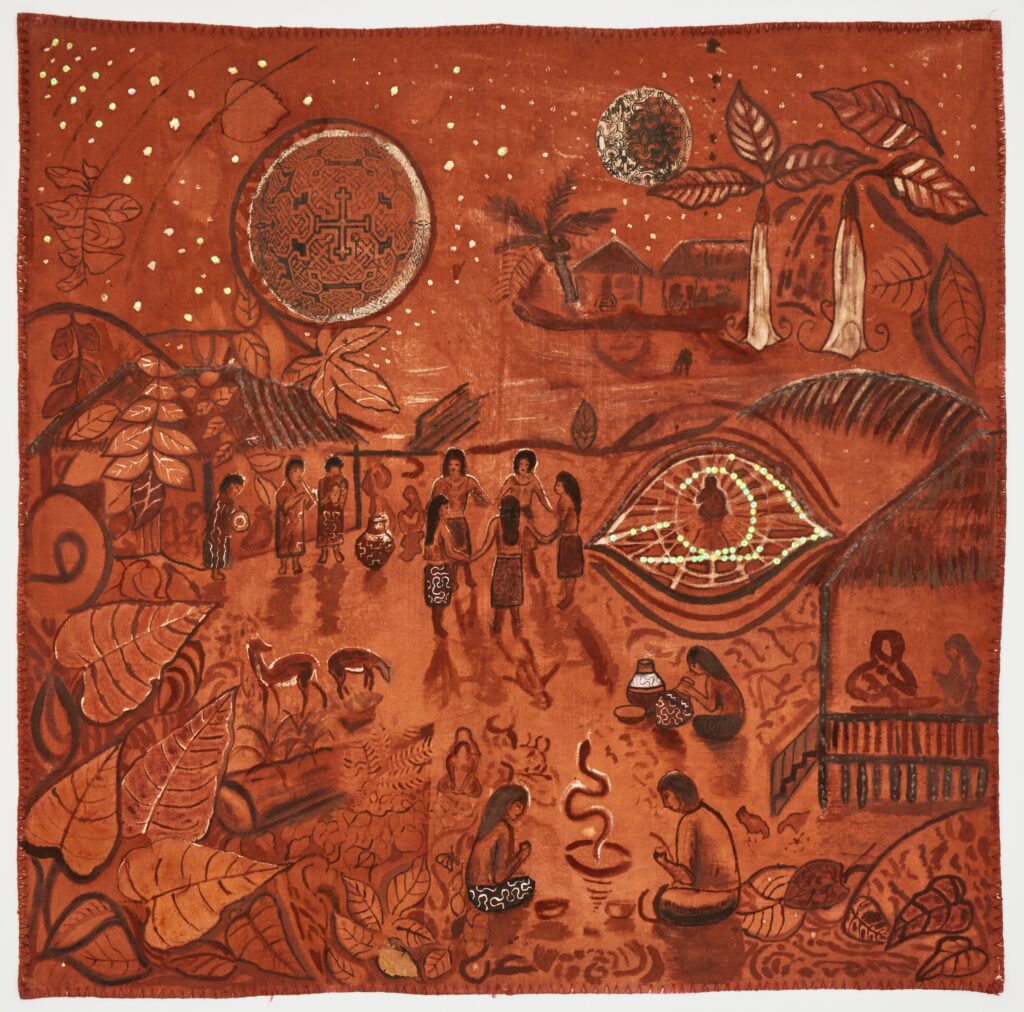 arrow_upward
arrow_upward
